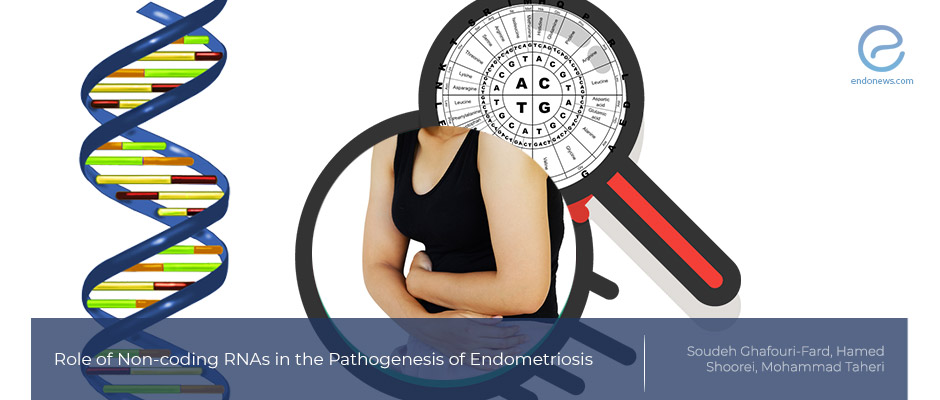Non-coding RNAs and Endometriosis
Oct 13, 2020
Non-coding RNAs as Biomarkers or therapeutic agents for diagnosis of endometriosis.
Key Points
Highlights:
- Non-coding RNAs contribute to endometriosis pathogenesis.
Importance:
- Understanding the role of the non-coding RNAs in endometriosis will pave the way to develop novel diagnostic tests and therapeutic targets for this disorder.
What is done here:
- This is a review article on long non-coding RNAs (lncRNAs) and microRNAs, and how they contribute to the pathogenesis of endometriosis.
Key results:
MicroRNAs and Endometriosis
- Aberrant expressions of a variety of miRNAs in endometriosis tissues or peripheral blood samples of patients are reported
- Single nucleotide polymorphisms (SNPs) for some microRNAs coding genes are associated with higher endometriosis risk.
Long Non-Coding RNAs and Endometriosis
- Eutopic endometrium and paired ovarian endometriosis tissues have a different expression.
- Alterations of some lncRNAs were reported in the pathogenesis of endometriosis.
Interaction between MiRNAs and LNCRNAS in the pathogenesis of endometriosis.
- Estrogen modulated microRNA axis may have a role in migration and invasion of endometrial cells
- Interactions in the network are reported to suppress immune cells to decrease the risk of endometriosis.
Limitations
- Samples are heterogeneous and the method of expression measurement result in the inconsistency between different samples.
- Compiled studies were done in a small sample size of patients, results were not verified in independent samples, thus no consensus on a miRNA panel for diagnosis of endometriosis.
- The diagnostic power of lncRNAs in endometriosis is less studied.
Lay Summary
Non-coding RNAs may have a fundamental role in the development of endometriosis. Non-coding transcripts have regulatory roles in the expression of protein-coding genes, thus regulate several signaling pathways. Based on their length, these non-coding RNAs are classified into two main classes: Long non-coding RNA (lncRNAs) and microRNAs.
MicroRNA is either located in the cytoplasm and acts as a critical regulator of gene expression by binding to its targets, or guides the transcriptional regulation of genes in the nucleus. On the other hand, lncRNAs regulate the flow of genetic information by modulating the chromatin structure, transcription, splicing, mRNA stability-accessibility. There is a complex interaction network between lncRNAs and miRNAs. In this complex, miRNA can regulate the stability and half-life of lncRNA, lncRNA can compete with miRNAs for binding with mRNA target sites.
The overall results of human and animal investigations showed that miRNA and lncRNAs participate in the pathogenesis of endometriosis. MicroRNA and lncRNA control inflammatory response, cell proliferation, angiogenesis, and tissue remodeling. Furthermore, MicroRNA and lncRNA can effectively modulate important cellular signaling pathways. The presence of some MicroRNA SNPs polymorphisms is associated with a higher risk of endometriosis.
The advent of next-generation sequencing has enhanced the pace of identification of dysregulated non-coding RNAs in all human diseases, including endometriosis. Several authors demonstrated the presence of distinctive signatures of miRNA and lncRNAs indicating their probable participation in the pathogenesis of endometriosis.
Dr.Taheri et al., have reviewed the related literature and recently published their paper entitled "Role of Non-coding RNAs in the Pathogenesis of Endometriosis" in the journal "Frontiers in Oncology", with a conclusion " ...thus understanding the role of these transcripts in endometriosis is a possible way to develop novel diagnostic tests and therapeutic targets for endometriosis".
Research Source: https://pubmed.ncbi.nlm.nih.gov/32850438/
non-coding RNA microRNA long non-coding RNA DNA Cell sorting next generation sequencing transcripts endometriosis; inflammation

